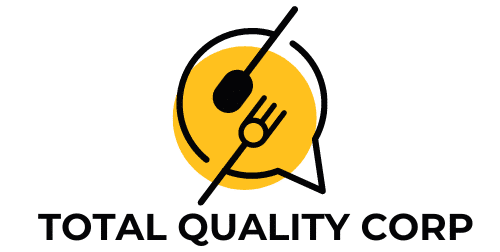How can you effectively manage a gluten-free bakery section in a cafe?

The burgeoning fad of gluten-free diets has grown from its roots in the health sector into a fully-fledged culinary trend. This surge in demand for gluten-free options has seen many businesses, including conventional bakeries, create a separate gluten-free section to cater to these customers. The challenge for these businesses is how to effectively manage a gluten-free bakery section in a cafe. This article will provide an in-depth guide to managing a gluten-free bakery section, focusing on sourcing gluten-free products, avoiding cross-contamination, and maintaining reasonable costs.
Understanding the Gluten-Free Customer
The first step to managing a gluten-free bakery section is to comprehend the needs of your gluten-free customers. The gluten-free customer is diverse, ranging from those with celiac disease and gluten intolerance to those who simply prefer gluten-free food for its perceived health benefits.
Additional reading : What are the specific steps to ensure a smooth transition in kitchen leadership in a gourmet restaurant?
It's crucial to understand that customers with gluten-related conditions are not just following a trend; for them, gluten-free is a necessary diet. Your gluten-free products should not just be "alternatives" to the usual fare, but stand-alone goods that are just as enticing as their gluten-containing counterparts.
Your bakery should also be prepared to answer any queries about your gluten-free products, such as their ingredients, the handling process, and potential cross-contamination. Transparency can help build trust with your customers and show them that your gluten-free section is not just a business tactic but a genuine concern for their dietary needs.
In the same genre : What strategies can be used to enhance the flavor profile of cocktails with minimal ingredients?
Sourcing Gluten-Free Products
Gluten-free baking requires specific ingredients, such as gluten-free flour blends, xanthan gum, and different types of starch. Sourcing quality gluten-free products is essential in creating tasty and safe food for your customers.
When choosing suppliers, ensure they provide certified gluten-free products. Certification from an accredited organization is a clear indicator that the products meet stringent gluten-free standards. This will also help build confidence with your gluten-free customers.
Creating relationships with suppliers who specialize in gluten-free ingredients can also help maintain the quality and consistency of your products. They will have a comprehensive understanding of gluten-free goods and can provide advice and support as you navigate the gluten-free baking world.
Managing Cross-Contamination
One of the biggest challenges in running a gluten-free bakery section is preventing cross-contamination. Gluten contamination can occur when gluten-free foods come into contact with foods that contain gluten. This could be due to shared baking tools, ovens, or even airborne flour.
Staff training is critical in managing cross-contamination. All staff should be aware of the risks and steps to prevent cross-contamination. This includes proper cleaning procedures, storage of gluten-free ingredients, and separate preparation areas for gluten-free products.
Consider having designated baking equipment for gluten-free products. While this might increase costs, it greatly reduces the risk of cross-contamination. Your customers' health should always be the top priority.
Balancing Costs
Operating a gluten-free bakery section can be more costly due to the higher prices of gluten-free ingredients and the need for separate baking equipment. However, these costs can be balanced with efficient planning and pricing strategies.
When planning your gluten-free menu, consider items that naturally do not contain gluten. This not only reduces costs but also gives customers a wider variety of choices.
For items that require gluten-free substitutes, price them accordingly. While gluten-free products tend to be more expensive, customers are usually willing to pay a higher price for health benefits and dietary needs.
Marketing Your Gluten-Free Section
Lastly, marketing is essential for the success of your gluten-free section. This goes beyond simply adding a gluten-free tag to your products. You need to communicate the benefits of your gluten-free options, and why your bakery is different from others.
Use social media to highlight your gluten-free offerings and share customer feedback. Online platforms are a great way to reach potential customers who are searching for gluten-free options.
In-store, make your gluten-free section easily identifiable. Clear signage can help customers quickly find what they're looking for.
Remember, managing a gluten-free bakery section is more than just offering gluten-free products. It requires understanding your customers, sourcing quality ingredients, preventing cross-contamination, balancing costs, and effective marketing. With these strategies, you can create a thriving gluten-free bakery section that caters to the needs of your customers while contributing to the success of your business.
Maintaining Customer Base and Profitability
Establishing a gluten-free bakery in your cafe can be a challenging yet rewarding endeavor. As you strive to cater to the needs of customers with celiac disease, gluten intolerances, and those who simply prefer gluten-free options, maintaining a steady customer base is critical. Achieving profitability while offering an array of high-quality gluten-free foods is not an impossible task; rather, it requires strategic planning and constant innovation.
Your customer base can be expanded by not only focusing on those individuals who are strictly gluten-free but also those looking for healthier food options. Gluten-free baked goods can often be low in sugar and high in fiber, making them a great option for health-conscious individuals. Make sure to highlight these benefits in your displays and promotional materials.
Profitability is directly linked to your business plan. Sourcing your ingredients from local farmers markets or partnering with local producers can ensure fresh, high-quality ingredients while keeping costs low. Also, try to integrate naturally gluten-free foods into your menu. Foods like rice, potatoes, and corn are naturally gluten-free and can be utilized in creative ways in your bakery.
Be sure to have a varied menu to cater to all tastes. From bread to cakes and everything in between, a diverse range of baked goods can attract a broader clientele and increase your profitability. Offer seasonal or limited-time items to keep your product range exciting and encourage repeat visitors.
A Safe and Inclusive Gluten-Free Bakery
Managing a gluten-free bakery section in a cafe can seem daunting, especially with the fear of cross-contamination. However, with careful planning and a commitment to food safety, your business can successfully cater to the growing market of gluten-free consumers.
First and foremost, creating a safe environment for your customers should be a priority. This means dedicated preparation areas and baking equipment for gluten-free products to prevent cross-contact. Staff should be trained regularly on these practices and the importance of adherence to them.
While the initial investment for separate baking equipment may seem steep, the return on investment will come from the trust and loyalty of your gluten-free customers. Your commitment to food safety is an asset to your brand, and customers will appreciate it.
Be transparent about your practices. This will not only educate your customers on the steps you take to keep them safe but will also enhance their trust in your business.
Remember, a gluten-free bakery section is more than just a product offering; it's about creating an inclusive environment where everyone can enjoy delicious baked goods without worry. With an understanding of your target market, a solid business plan, a commitment to food safety, and the right promotional strategy, your gluten-free bakery can be a successful and valued part of your cafe.
Now, take these insights, implement them, and watch your gluten-free section flourish. Good luck, and happy baking!
